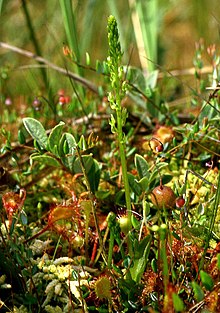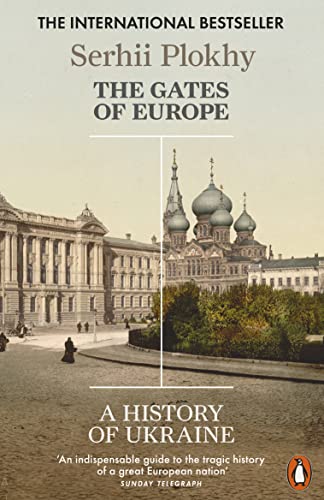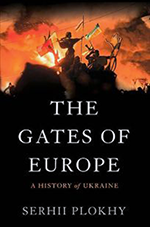Welcome back to Learning New Words with Lymond, in which I blog my way through the Lymond Chronicles with a specific focus on Dorothy Dunnett's use of rare and obscure words. When I reread The Game of Kings in December 2023,
I made a note of every unfamiliar word or reference. In these posts, I will work my way through the alphabet, looking up each new word and reflecting on what it means in context. I hope this practice will improve my own vocabulary and provide opportunities to bask in the beauty and complexity of Dunnett's writing.
We continue with words beginning with the letter 'b'...
barghest
Lymond flushed. "Instead of surviving to bellow like a barghest?" (p. 459)
One of most interesting things about tracing a writer's use of rare words is the way it shows what they have been reading. For instance, the use of the word "barghest" suggests that Dorothy Dunnett had been reading Sir Walter Scott, who is one of the earliest writers to use the word in print. The
OED defines a barghest as "a goblin, fabled to appear in the form of a large dog, with various
horrible characteristics, and to portend imminent death or misfortune."
barmecide
The procession next time along the top corridor was formidable: a kind of barmecide feast of invalid diet as well as jugs, bowls, bandages and clothes, towels, ointment and a small wooden bathtub bound in brass. (p. 369)
The word derives from the patronymic of a character in the Arabian Nights, a prince who provided a beggar with a series of empty dishes, pretending it was a feast. The beggar went along with the joke. The word can be used as an adjective, meaning illusory or imaginary, or a noun, describing someone who offers imaginary or illusory food or benefits. (
OED)
Bateleur
He had the World and the Bateleur in his hand. (p. 534)
The dictionary says a bateleur is a species of short-tailed eagle (
Terathopius (Helotarsus) ecaudatus), found in Africa and Arabia. Given that
The Game of Kings begins in 1547 and the word is used to describe different kinds of tarot cards, an eagle clearly isn't the right definition. In the tarot deck, the Bateleur is a wild card, or a low-ranked card that can also be worth a lot of points (
Wikipedia). The fact that Will Scott has it in his last hand before winning his game of tarocco confirms his skill and his luck as a card player. Again, when I think about the level of research that went into that single card playing scene, I want to applaud. There are academic articles that are less well-researched.
bauchly
You'll solve nothing planted there like a couple of bauchly tenors at a glee. (p. 306)
An adverb, described from a Scots adjective meaning "weak, poor, pithless, without substance or stamina"; it the adjective can also mean "indifferent," "sorry," or "shaky." (
OED). A glee, of course, is an old, old word for a musical entertainment. I do enjoy how Dunnett seems to put older words in the mouths of her characters (the dictionary claims the earliest attested use of
bauch is from 1575), and uses more modern, eighteenth and nineteenth century words, in description and narration.
bêtise
He retorted instantly. "Oh, nothing better--in the right place. 'It's only right you should know'--I wonder how many that classic bêtise has driven to the river and the dagger and the pillow in a quiet corner." (p. 157)
A borrowing from French, meaning stupidity
(coming from
the French word,
bête, foolish, from the Old French word, beste, meaning beast. In English, "a foolish, ill-timed remark or action; a piece of folly." (
OED). A word I would like to adopt into my own vocabulary, once I learn to pronounce it correctly.
bog-orchis
Plump
clouds like amoretti hung in a blue sky; shining rooks cawed among
shining leaves and an otter with a half-eaten fish shivered the bog
orchis with his shoulder as he passed. (p. 360)
An older spelling for a bog orchid, which is exactly what it sounds like, a species of orchid that grows in a bog (
Malaxis paludosa). (
OED) It looks like this:
bonzelike
His expression altered from the grave to the bonzelike. (p. 327)
I have to say, I miss the internet before the age of artificial intelligence, when one could look up a weirdly spelled word and not have it automatically corrected to a more common spelling. If I meant
bronze-like, I would have looked for that! Ugh. Eventually, I was able to disgorge a match,
bonze-like, in James Hueneker'
s Mezzotints in Modern Music (New York, 1899). In any event, this particular word isn't in the OED, but the word bonze is--it means a Buddhist religious teacher or priest, particularly in China or Japan. (
OED) We might thus picture Johnnie Bullo's expression moving from serious to serene.
burin
His gaze never left Lymond: inexorable, ruthless, dissecting, hygienic as a burin or a scalpel. And there was a change in his brother's face: a fissure, the first break. p. 447
A burin is a tool used by artisans. It is used to work marble or engrave copper. A burin can also be a flint tool with a point like a chisel. (
OED). The oldest usage seems to be in reference to copper engraving so I would guess this what Dunnett has in mind particularly since she pairs it with a fine cutting tool (a scalpel). On the other hand, we have fissures and breaks in the next clause, which would suggest stone carving. Isn't it beautiful?
butter-tooth
The point was made. Sir Thomas, butter-tooth veiled, seized a pigeon and said no more until the end of the meal. (p. 464)
Where did Dorothy Dunnett acquire her early modern vocabulary, I wonder? Extensive reading was obviously
part of it but some of her word choice seems so idiosyncratic as to make me deeply curious what reference books she had at her disposal. The imagery here is just so, so fantastic--Thomas Palmer, at dinner, tweaking the beards of his fellow guests, and then sitting back to enjoy his handiwork. Butter-tooth is first used in the sixteenth century (the earliest use is about 1566), and refers either to the incisors (front teeth); later, especially as a plural, to yellowing or poorly cared-for teeth. (
OED)
A Note on Links
Through
my university, I'm incredibly lucky to have access to the Oxford
English Dictionary, and indeed the entire Oxford Reference series of
dictionaries and encyclopedias. It is a principle of this blog to try
to use and link to sources that anyone can access, but the OED has
features--like the ability to explore the etymology, frequency, history
of use, and meanings of words, that free online dictionaries simply
don't have. My plan is to quote relevant bits of entries, and to include
open access links wherever possible, so that anyone who wants to do so
can geek out with me, paywalls be damned.



